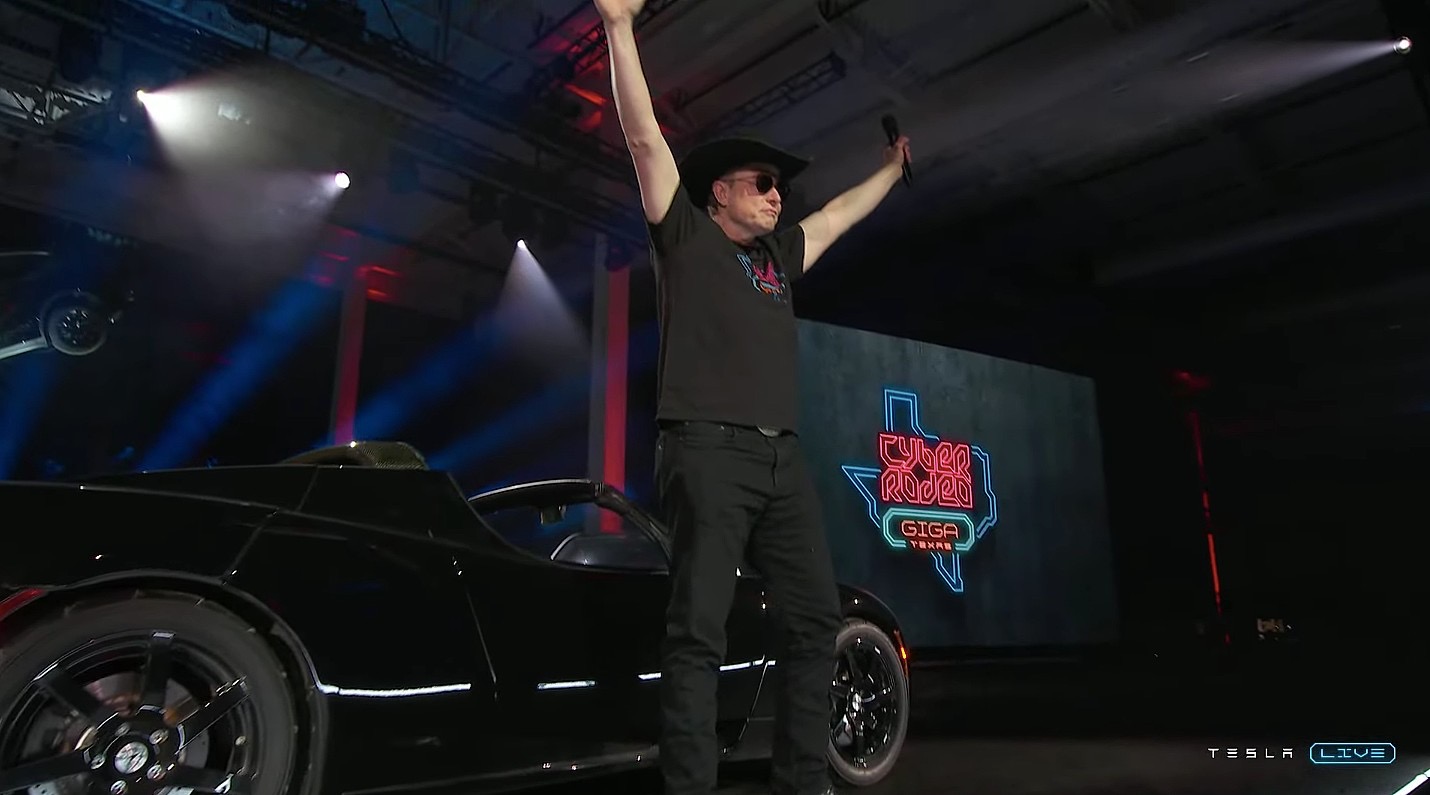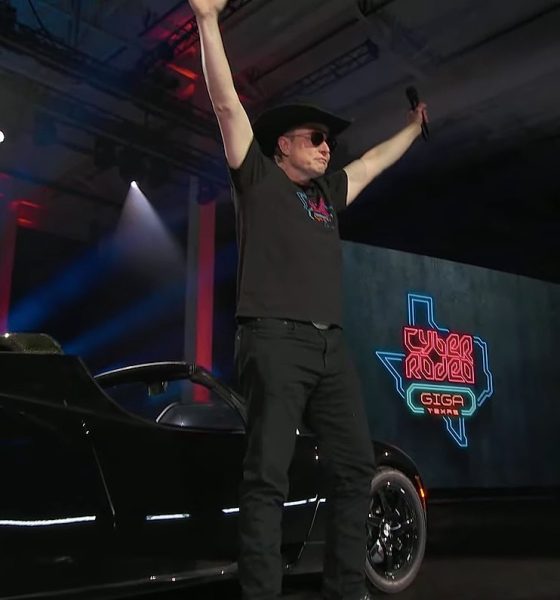As everyone at Tesla’s Cyber Rodeo settles down to listen to Elon Musk’s talk at Giga Texas, the anticipation builds in the air. The Tesla community is eager and excited to hear about any updates and details Elon Musk will announce to the world at Giga Texas Cyber Rodeo.
Welcoming Elon Musk to the stage are drones depicting an image of Nikola Tesla, the inventor the company is named after. The drones also depicted the Cyber Rodeo sign. Later, the drone show formed the image of a moving vehicle, which turned out to be the Model Y. Next the drones formed the Cybertruck’s outline in the sky, an image few at the Cyber Rodeo will forget.
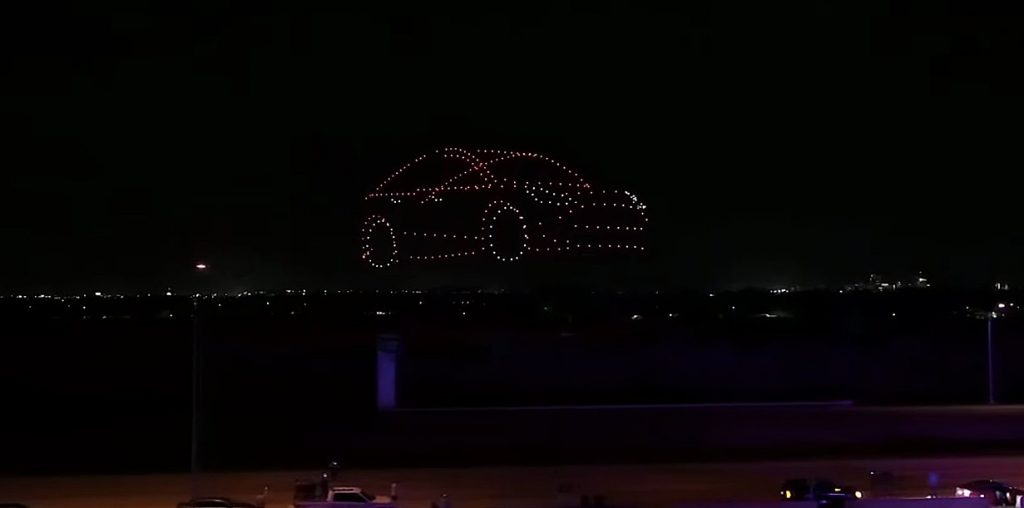
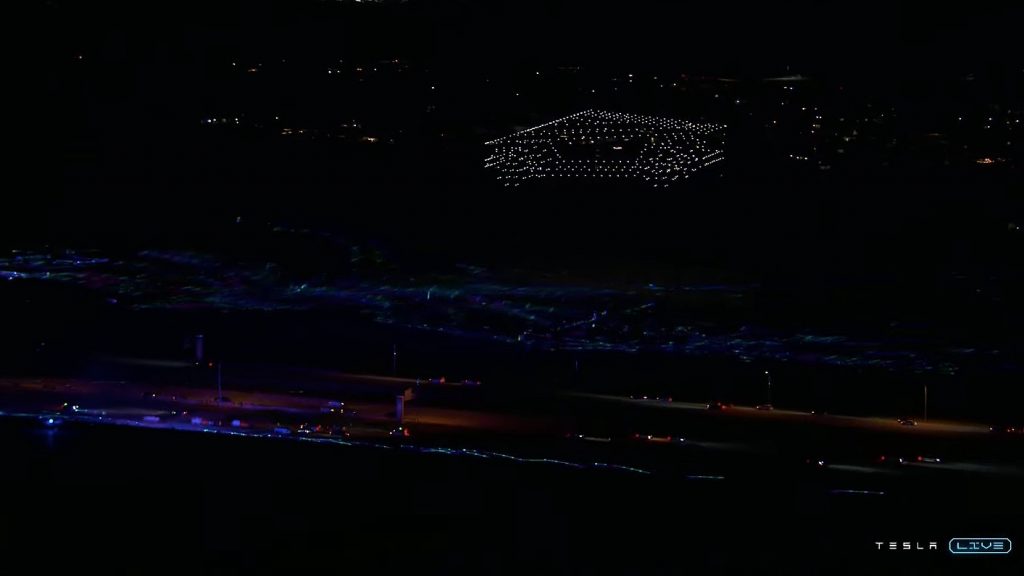
And, of course, in true Elon fashion, Tesla did not forget to highlight the community’s love for The Doge with drones. The Tesla hedgehog also made an appearance during the spectacular drone show.
After the drone show, Tesla showed a short clip of a “herd” Tesla Model Y’s running through Giga Texas grounds alongside a horse and its rider.
The video was cut short with the arrival of Elon Musk, arriving in style in an original Tesla Roadster — the car that started it all.
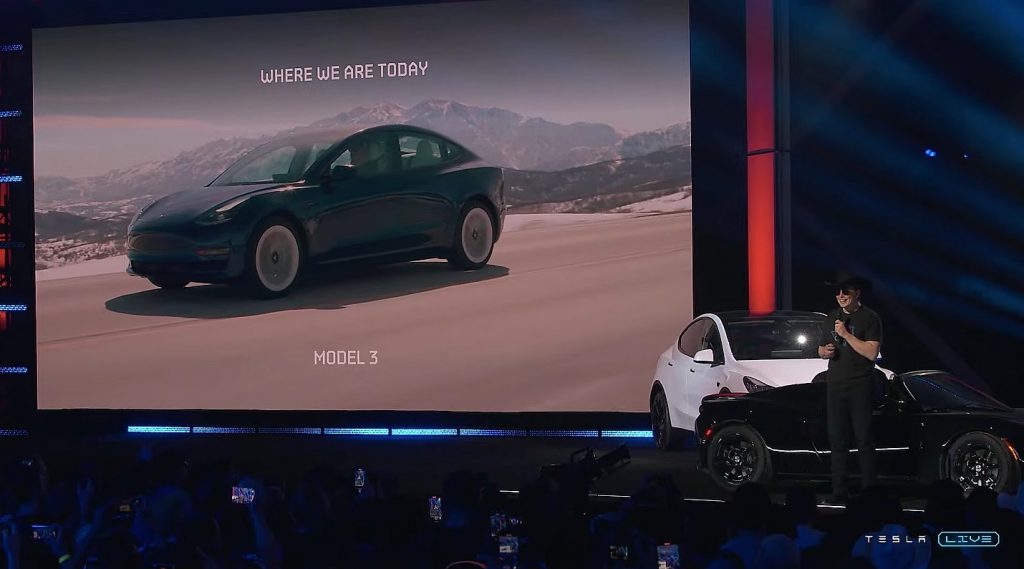
The following are Elon Musk’s comments from his Giga Texas Cyber Rodeo address.
“We’re gonna talk about the past, present and future,” Elon Musk told the crowd, showcasing the first car Tesla ever made: the Roadster.
“When we first started out Tesla, I thought we had — optimistically — a 10% chance of succeeding,” he stated. He thanked the Tesla team for their hard work and contributed the company’s current success to them.
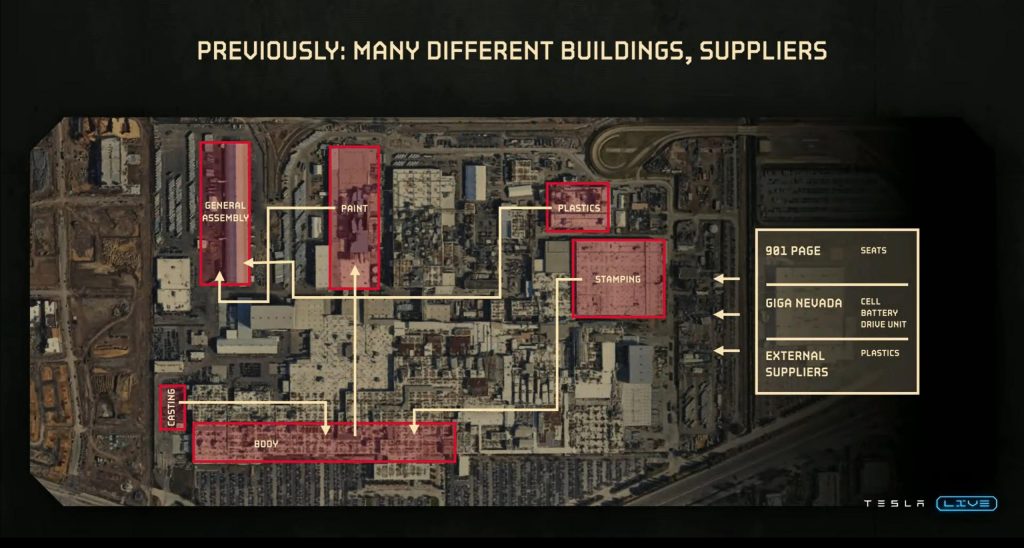
Musk lists all the products Tesla offers, including its solar products. He announced that two-thirds of America’s electric vehicles are Tesla cars.
Musk highlighted the accomplishments of the Tesla AI team. He announced that Tesla was aiming for the wide release of FSD beta in North America this year.
“California was running out of room,” Musk stated. “And we needed a place to grow big. And there’s no place like Texas,” he said, thanking the state and particularly Travis County.
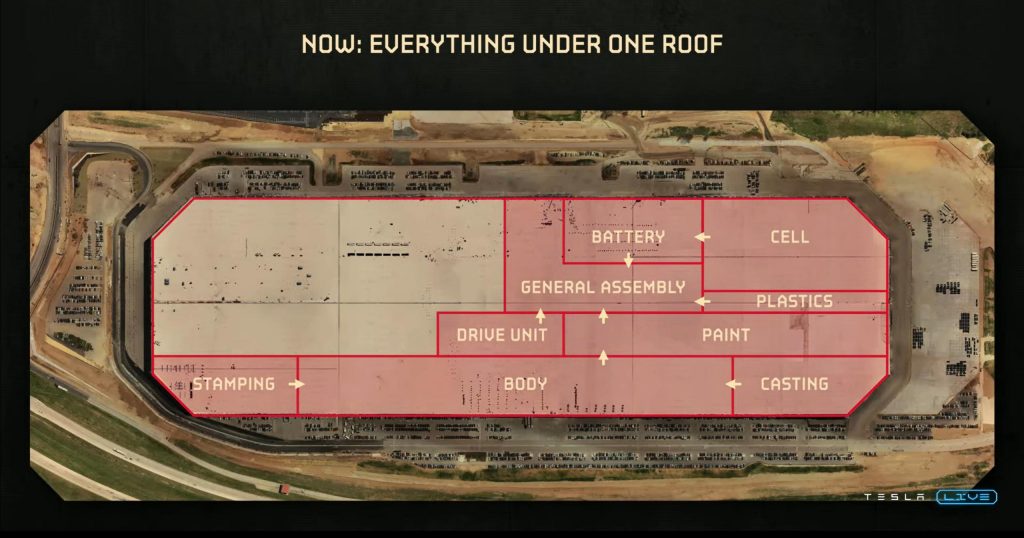
Musk revealed that Tesla Giga Texas is taller than the Burj Khalifa if the factory were turned on its side. In classic Elon Musk, the CEO said that one could fit a total of 194 billion hamsters in Giga Texas.
“And this building is the most advanced car factory that Earth’s ever seen,” proclaimed Elon Musk, bringing up the idea that Tesla’s factories are product in and of themselves once again.
Musk noted that Tesla is building its own cells at Giga Texas, the long-awaited 4680 cells. He proudly stated that the Austin factory could be one of the biggest cell factories in the world.
“Raw materials in, a bunch of stuff happens, and car out,” Musk said, describing the simplified version of Tesla’s main operations. He added that Tesla plans to produce the Cybertruck in Austin next year.
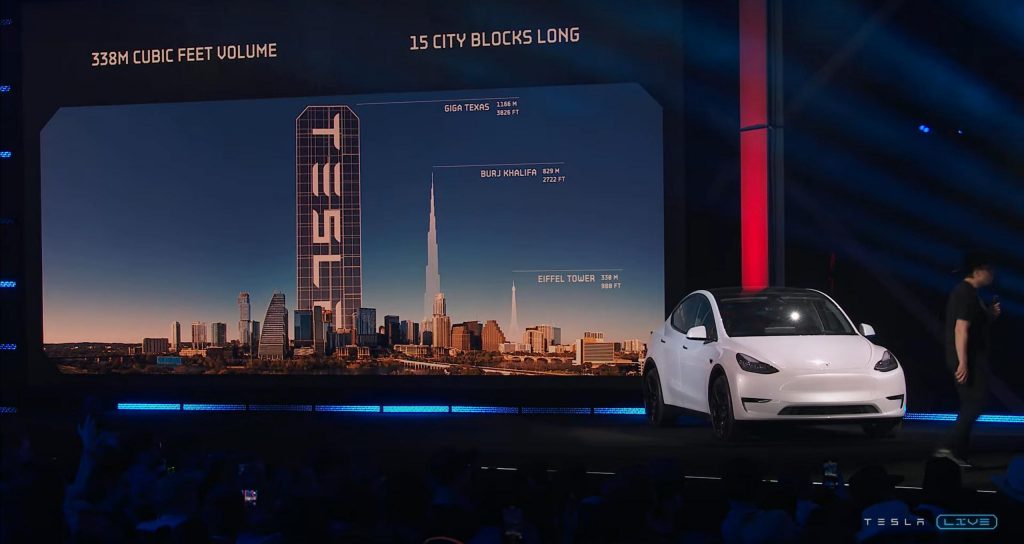
“I can’t wait to have this baby around. [Cybertruck] is gonna be epic,” Musk commented about the electric pickup truck.
Musk also stated that Giga Texas will be the most “high-volume” factory in America. He stated that Tesla will aim to command 20% of the auto market in the long term.
“We’re gonna move at a truly massive scale,” Elon Musk teased. He also hinted at the company’s Robotaxi fleet, describing it as futuristic and significantly different than Tesla’s other offerings. Musk also talked about Optimus.
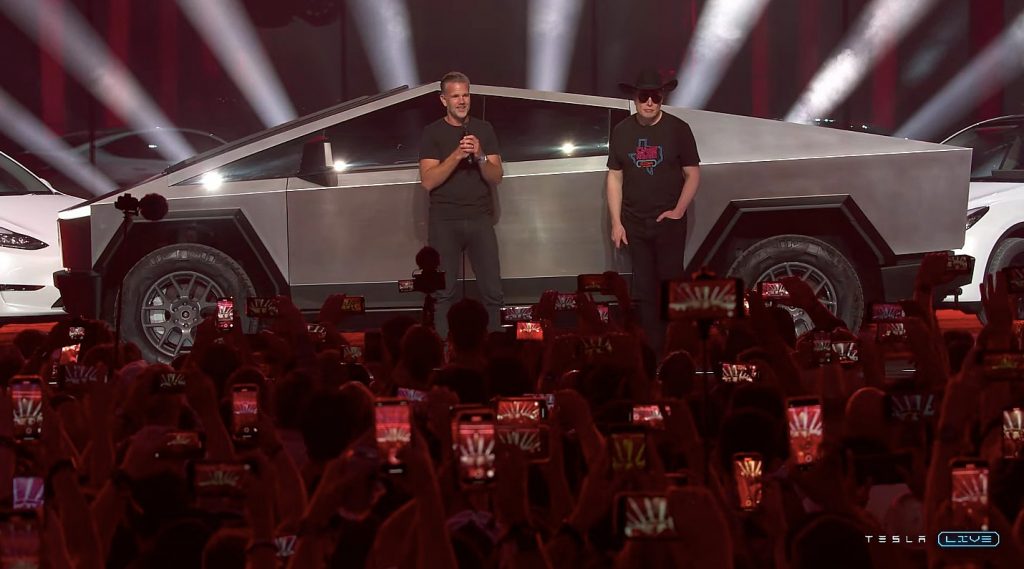
Tesla plans to produce V1 Optimus, the Cybertruck, the next-generation Roadster, and the Semi next year.
Tesla Chief Designer Franz von Holzhausen later showed up with the Cybertruck. Elon Musk pointed out that there are no handles on the Cybertruck. He apologized for the vehicle’s production delay, though both the CEO and the Design Chief assured the audience that the Cybertruck will be well worth the wait.
And with that, Elon Musk kicked off the Cyber Rodeo party! Several minutes’ worth of fireworks ensued.
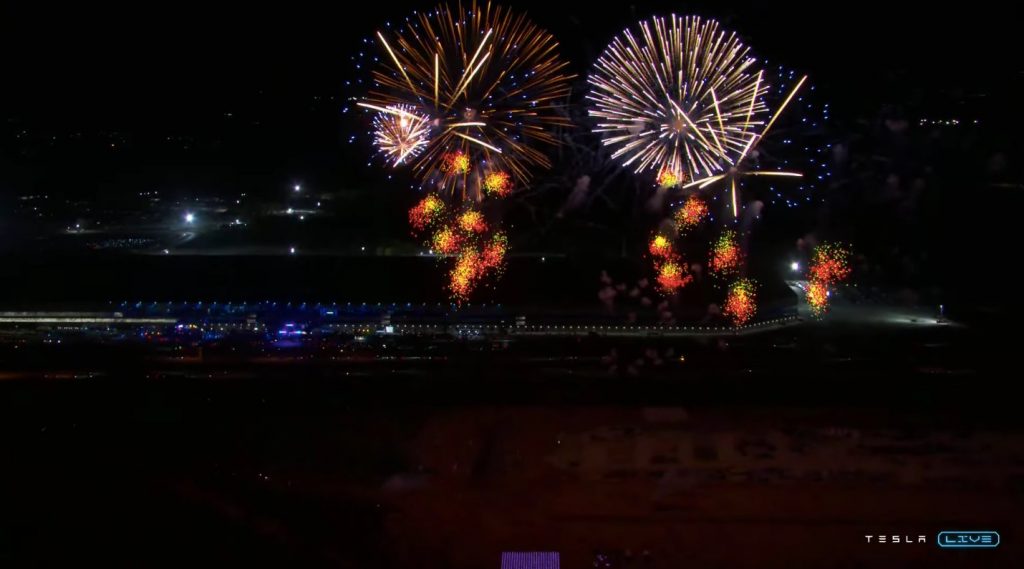
The Teslarati team would appreciate hearing from you. If you have any tips, reach out to me at maria@teslarati.com or via Twitter @Writer_01001101.

Elon Musk
Elon Musk and Tesla AI Director share insights after empty driver seat Robotaxi rides
The executives’ unoccupied tests hint at the rapid progress of Tesla’s unsupervised Robotaxi efforts.

Tesla CEO Elon Musk and AI Director Ashok Elluswamy celebrated Christmas Eve by sharing personal experiences with Robotaxi vehicles that had no safety monitor or occupant in the driver’s seat. Musk described the system’s “perfect driving” around Austin, while Elluswamy posted video from the back seat, calling it “an amazing experience.”
The executives’ unoccupied tests hint at the rapid progress of Tesla’s unsupervised Robotaxi efforts.
Elon and Ashok’s firsthand Robotaxi insights
Prior to Musk and the Tesla AI Director’s posts, sightings of unmanned Teslas navigating public roads were widely shared on social media. One such vehicle was spotted in Austin, Texas, which Elon Musk acknowleged by stating that “Testing is underway with no occupants in the car.”
Based on his Christmas Eve post, Musk seemed to have tested an unmanned Tesla himself. “A Tesla with no safety monitor in the car and me sitting in the passenger seat took me all around Austin on Sunday with perfect driving,” Musk wrote in his post.
Elluswamy responded with a 2-minute video showing himself in the rear of an unmanned Tesla. The video featured the vehicle’s empty front seats, as well as its smooth handling through real-world traffic. He captioned his video with the words, “It’s an amazing experience!”
Towards Unsupervised operations
During an xAI Hackathon earlier this month, Elon Musk mentioned that Tesla owed be removing Safety Monitors from its Robotaxis in Austin in just three weeks. “Unsupervised is pretty much solved at this point. So there will be Tesla Robotaxis operating in Austin with no one in them. Not even anyone in the passenger seat in about three weeks,” he said. Musk echoed similar estimates at the 2025 Annual Shareholder Meeting and the Q3 2025 earnings call.
Considering the insights that were posted Musk and Elluswamy, it does appear that Tesla is working hard towards operating its Robotaxis with no safety monitors. This is quite impressive considering that the service was launched just earlier this year.
Elon Musk
Starlink passes 9 million active customers just weeks after hitting 8 million
The milestone highlights the accelerating growth of Starlink, which has now been adding over 20,000 new users per day.

SpaceX’s Starlink satellite internet service has continued its rapid global expansion, surpassing 9 million active customers just weeks after crossing the 8 million mark.
The milestone highlights the accelerating growth of Starlink, which has now been adding over 20,000 new users per day.
9 million customers
In a post on X, SpaceX stated that Starlink now serves over 9 million active users across 155 countries, territories, and markets. The company reached 8 million customers in early November, meaning it added roughly 1 million subscribers in under seven weeks, or about 21,275 new users on average per day.
“Starlink is connecting more than 9M active customers with high-speed internet across 155 countries, territories, and many other markets,” Starlink wrote in a post on its official X account. SpaceX President Gwynne Shotwell also celebrated the milestone on X. “A huge thank you to all of our customers and congrats to the Starlink team for such an incredible product,” she wrote.
That growth rate reflects both rising demand for broadband in underserved regions and Starlink’s expanding satellite constellation, which now includes more than 9,000 low-Earth-orbit satellites designed to deliver high-speed, low-latency internet worldwide.
Starlink’s momentum
Starlink’s momentum has been building up. SpaceX reported 4.6 million Starlink customers in December 2024, followed by 7 million by August 2025, and 8 million customers in November. Independent data also suggests Starlink usage is rising sharply, with Cloudflare reporting that global web traffic from Starlink users more than doubled in 2025, as noted in an Insider report.
Starlink’s momentum is increasingly tied to SpaceX’s broader financial outlook. Elon Musk has said the satellite network is “by far” the company’s largest revenue driver, and reports suggest SpaceX may be positioning itself for an initial public offering as soon as next year, with valuations estimated as high as $1.5 trillion. Musk has also suggested in the past that Starlink could have its own IPO in the future.
News
NVIDIA Director of Robotics: Tesla FSD v14 is the first AI to pass the “Physical Turing Test”
After testing FSD v14, Fan stated that his experience with FSD felt magical at first, but it soon started to feel like a routine.

NVIDIA Director of Robotics Jim Fan has praised Tesla’s Full Self-Driving (Supervised) v14 as the first AI to pass what he described as a “Physical Turing Test.”
After testing FSD v14, Fan stated that his experience with FSD felt magical at first, but it soon started to feel like a routine. And just like smartphones today, removing it now would “actively hurt.”
Jim Fan’s hands-on FSD v14 impressions
Fan, a leading researcher in embodied AI who is currently solving Physical AI at NVIDIA and spearheading the company’s Project GR00T initiative, noted that he actually was late to the Tesla game. He was, however, one of the first to try out FSD v14.
“I was very late to own a Tesla but among the earliest to try out FSD v14. It’s perhaps the first time I experience an AI that passes the Physical Turing Test: after a long day at work, you press a button, lay back, and couldn’t tell if a neural net or a human drove you home,” Fan wrote in a post on X.
Fan added: “Despite knowing exactly how robot learning works, I still find it magical watching the steering wheel turn by itself. First it feels surreal, next it becomes routine. Then, like the smartphone, taking it away actively hurts. This is how humanity gets rewired and glued to god-like technologies.”
The Physical Turing Test
The original Turing Test was conceived by Alan Turing in 1950, and it was aimed at determining if a machine could exhibit behavior that is equivalent to or indistinguishable from a human. By focusing on text-based conversations, the original Turing Test set a high bar for natural language processing and machine learning.
This test has been passed by today’s large language models. However, the capability to converse in a humanlike manner is a completely different challenge from performing real-world problem-solving or physical interactions. Thus, Fan introduced the Physical Turing Test, which challenges AI systems to demonstrate intelligence through physical actions.
Based on Fan’s comments, Tesla has demonstrated these intelligent physical actions with FSD v14. Elon Musk agreed with the NVIDIA executive, stating in a post on X that with FSD v14, “you can sense the sentience maturing.” Musk also praised Tesla AI, calling it the best “real-world AI” today.
